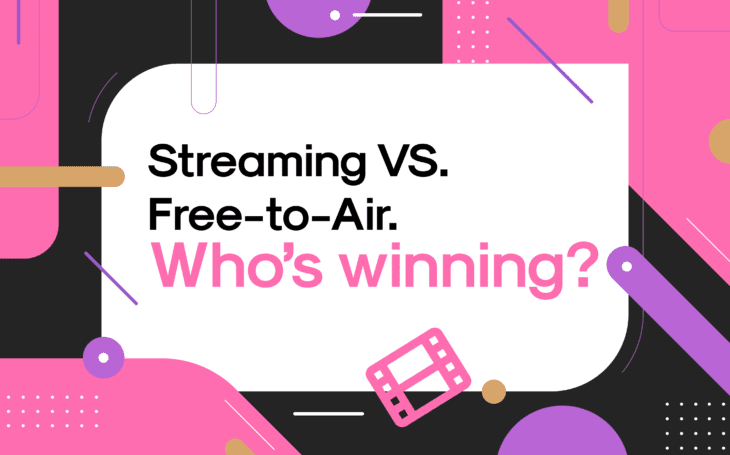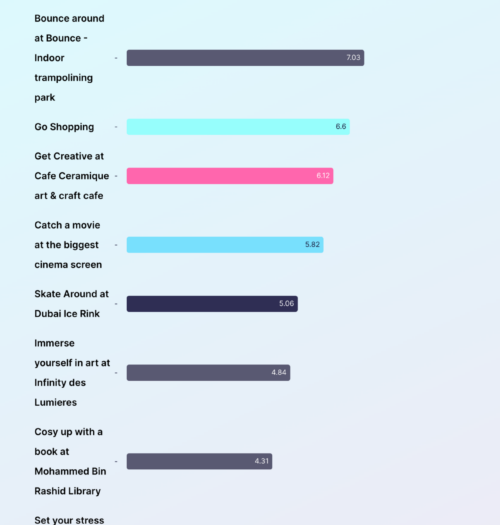🎁 Free 30-day publishing fees on Pay-As-You-GO. Get 15% off when recruiting from the UserQ Panel, with code HELLO15

Hey there, couch potatoes and binge-watch enthusiasts! It’s no secret that the way we get our entertainment fix has done a total 180. With Netflix, Prime Video, Disney Plus, YouTube, and their posse of streaming services storming the scene, old-school free-to-air TV might be feeling a bit left out. The question now arises: Do people still watch free-to-air TV, or has the convenience of on-demand options taken over? We delved into this topic, conducting a survey with the help of our trusty sidekick, UserQ, to uncover the current preferences and behaviours of viewers.
The streaming revolution: a shift away from free-to-air TV. Or is it?
The streaming revolution has brought about an abundance of options that cater to viewers’ diverse tastes and preferences. As we asked our team about their TV habits, a resounding consensus emerged: on-demand services have become the go-to choice for modern entertainment.
We decided to go all Sherlock Holmes and conduct a survey to get the dirt. We gathered insights from a diverse group of respondents, shedding light on the current state of viewership habits. Among those surveyed, 56% indicated that they engage with both free-to-air TV and on-demand streaming. However, the data also revealed a significant shift, with 14% of respondents admitting to exclusively consuming free-to-air content. Props to them for keeping tradition alive!

Why do some people stick with free TV?
To understand why some individuals still opt for free-to-air TV, we explored the underlying motivations. The findings revealed two primary reasons: free content and the appeal of local programming. The allure of not having to pay for access to content, coupled with the familiarity and cultural relevance of local shows, was evident.
Entertainment buffet: what's on the menu?
Movies emerged as the leading category, capturing the attention of 18.61% of respondents. Following closely were TV series, with sports content securing the third spot. This multifaceted viewing behaviour underlines the importance of catering to a wide range of interests.
Advertisements: a complex relationship
Advertising is a critical aspect of television, and our survey delved into how viewers interact with commercials. Astonishingly, over half of the respondents (50%+) paid attention to advertisements. Advertisers, you’re still in the game! But wait, an intriguing caveat—the “too long, didn’t watch” rule applies. Keep those ads snappy, or you might just lose your audience.
The Impact of advertising on consumer behaviour
Advertisements, it seems, continue to wield substantial influence over consumer behaviour. An overwhelming 80% of respondents revealed that they had purchased a product after seeing it advertised on free-to-air TV. This statistic underscores the power of advertising in driving purchasing decisions, even in an age dominated by digital options. Apparently, the urge to shop hits hard after a dose of TV commercials.
Streaming services: a new frontier
While traditional TV may have competition, the rise of streaming services has not gone unnoticed. Our survey revealed that a significant 77% of respondents were subscribed to at least one streaming service. Notably, 44% of participants took their entertainment a step further, subscribing to not just one but two streaming platforms.
In the realm of streaming services, Netflix emerged as the frontrunner with a substantial 30% of respondents favoring it. A surprising contender for the second spot was YouTube, claiming the allegiance of 17% of participants.
Dollars for drama: What's the budget?
Okay, we know you’re dying to know how much people are forking over for their streaming fix. On average, it’s a small $10-$20 per month. Seems like quality content and endless binge-watching are worth the price tag.
Embracing the future of entertainment
As the streaming landscape continues to evolve, traditional free-to-air TV finds itself navigating new waters. The insights gleaned from our survey showcase a dynamic entertainment ecosystem, where on-demand services have become the norm. Despite this shift, free-to-air TV remains relevant, drawing audiences with free content and local programming.
Advertisers can take solace in the fact that their efforts are still impactful, though the length of advertisements warrants consideration. The convergence of advertising and consumer behaviour is evident, with a significant majority acknowledging the influence of TV commercials on their purchasing decisions.
In a world where streaming services reign supreme, the allure of a diverse range of content is undeniable. Viewers have embraced this new era, with Netflix and YouTube emerging as the frontrunners in an ever-expanding lineup of platforms. As consumers allocate a reasonable budget to their streaming subscriptions, it’s clear that the entertainment industry has embraced a new paradigm—one where choice, convenience, and quality content take center stage.
Related Post

It’s raining in Dubai: Here
It’s raining in Dubai and we asked residents to rate their top inactivities (thanks to TimeOut Dubai) in order of

UserQ research: will a universal
The four-day working week has been a talking point here in the UAE for quite some time now. In fact,

Sustainability practices and Environmental awareness
As the UAE hosted COP 28 (United Nations Climate Change Conference) in Dubai from November 30 to December 12, 2023,
Subscribe to our
product newsletter!
Receive emails about UserQ updates, new features,
offers and latest trends.


